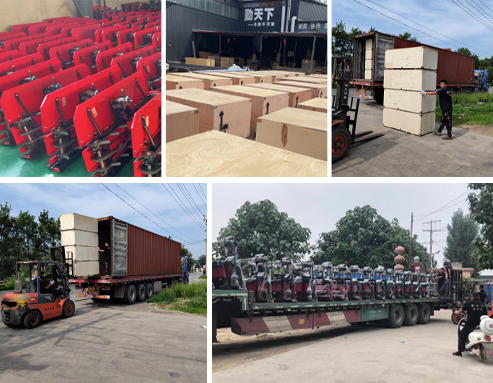Price Overview for Wheat Harvesting Equipment and Machinery Options
The Price of Wheat Harvester Machines A Comprehensive Overview
In the world of agriculture, wheat is one of the most essential crops, providing food for billions worldwide. As farmers strive to maximize their yield and efficiency, the role of technology becomes crucial. One of the key pieces of equipment in wheat production is the harvester machine. This article delves into the factors influencing the price of wheat harvester machines, the types available, and the economic implications for farmers.
Understanding Wheat Harvesters
Wheat harvesters, commonly known as combines, are specialized farming equipment designed to efficiently harvest wheat. These machines streamline the process of reaping, threshing, and winnowing, significantly reducing the time and labor required for harvesting. Given the importance of wheat in the global food supply, investing in a high-quality harvester is a decision that can profoundly impact a farmer's productivity and profitability.
Factors Influencing Prices
1. Type of Harvester The price of wheat harvesters varies widely depending on the type. There are two primary categories compact harvesters and larger, more sophisticated models. Compact harvesters, suitable for smaller farms, can range from $30,000 to $100,000, while larger, more advanced combines can cost anywhere from $100,000 to over $500,000. The level of technology, efficiency, and capacity are key determinants of price.
2. Brand and Reputation Renowned manufacturers like John Deere, Case IH, and New Holland typically command higher prices due to their reputation for quality, reliability, and after-sales service. Farmers often consider brand loyalty and past experiences when purchasing equipment, which can influence their willingness to invest in more expensive models.
3. Features and Technology Modern harvesters come with sophisticated features, such as GPS navigation, automated controls, and powerful engines that enhance fuel efficiency and crop management. These advanced technologies can raise the price significantly, but they also offer farmers increased productivity and reduced operational costs in the long term.
wheat harvester machine price

4. Economic Factors The broader economy and agricultural market trends also affect harvester prices. Fluctuations in the prices of raw materials, labor costs, and government policies regarding subsidies and tariffs can impact the overall cost of manufacturing, subsequently influencing retail prices. Additionally, rising inflation may lead to higher prices for agricultural equipment.
5. Location and Availability In different regions, the availability of dealers and service centers can also affect pricing. In areas where harvesters are in high demand, competition among dealers can drive prices up or down. Local economic conditions can create variations, making it essential for farmers to research the market in their specific region.
Financing Options for Farmers
Given the substantial investment required to purchase a wheat harvester, many farmers explore financing options. Loans, lease agreements, and government grants can alleviate the financial burden and make it more feasible to acquire new equipment. It's crucial for farmers to assess their financial situation and potential return on investment when considering a harvester purchase.
Conclusion
The price of wheat harvester machines is influenced by several factors, including the type of harvester, brand reputation, technological advancements, economic conditions, and local availability. As farmers seek to enhance their productivity and efficiency, understanding these factors becomes imperative. While the initial cost may seem significant, investing in a quality harvester can lead to improved yields and long-term profitability.
With advancements in technology and a growing focus on sustainable agriculture, the future of wheat harvesting looks promising. Farmers who stay informed about market trends and financing options will be better equipped to make strategic decisions that benefit their operations. Ultimately, the right wheat harvester can transform the efficiency of harvesting, play a crucial role in food production, and contribute to a farmer's success in a competitive agricultural landscape.
Latest news
-
When to Upgrade Your Old Forage HarvesterNewsJun.05,2025
-
One Forage Harvester for All Your NeedsNewsJun.05,2025
-
Mastering the Grass Reaper MachineNewsJun.05,2025
-
How Small Farms Make Full Use of Wheat ReaperNewsJun.05,2025
-
Harvesting Wheat the Easy Way: Use a Mini Tractor ReaperNewsJun.05,2025
-
Growing Demand for the Mini Tractor Reaper in AsiaNewsJun.05,2025







